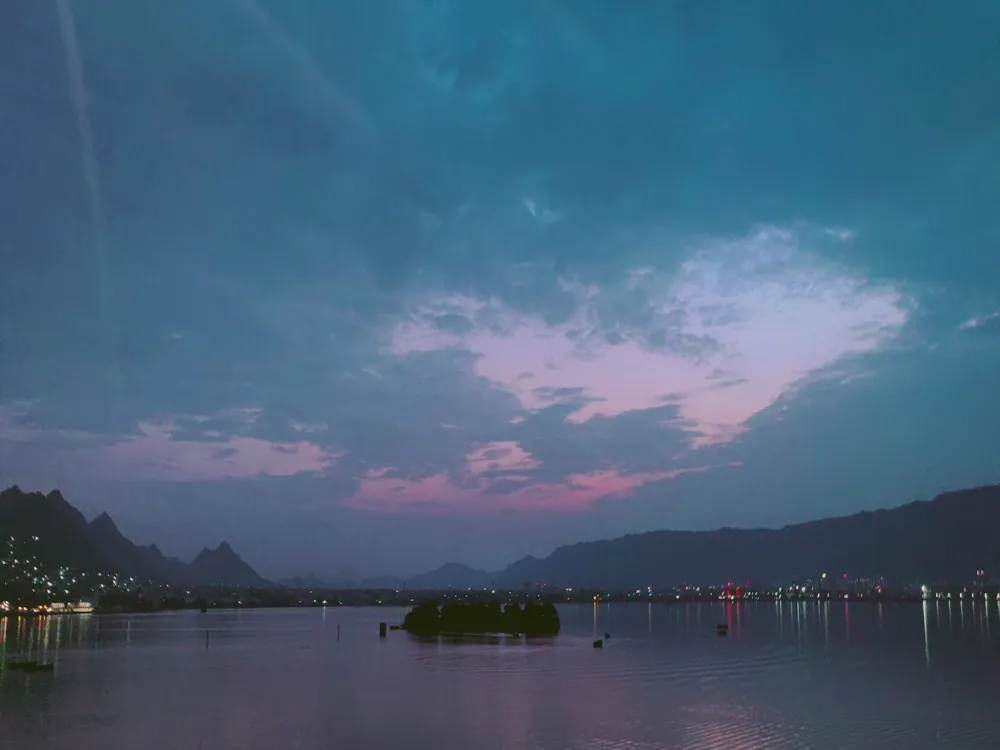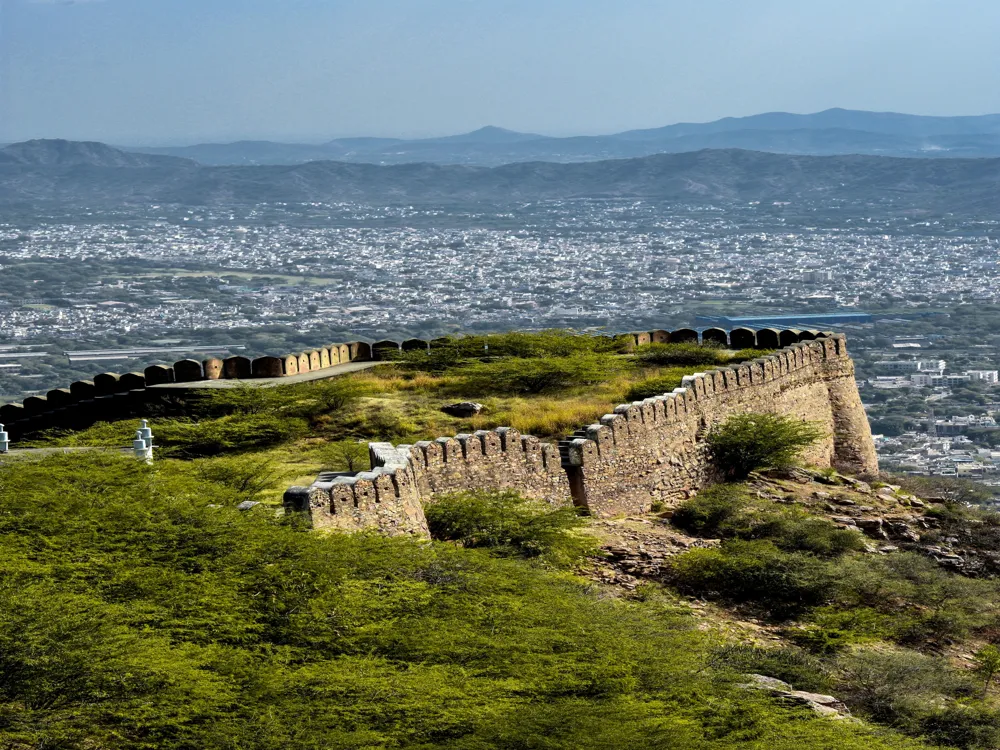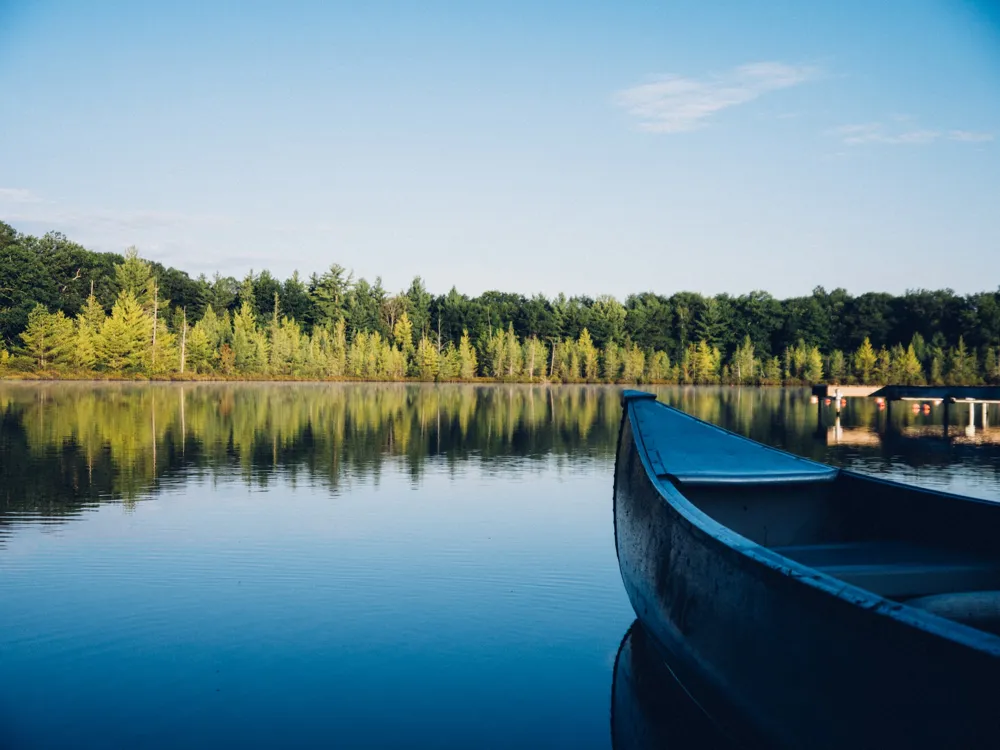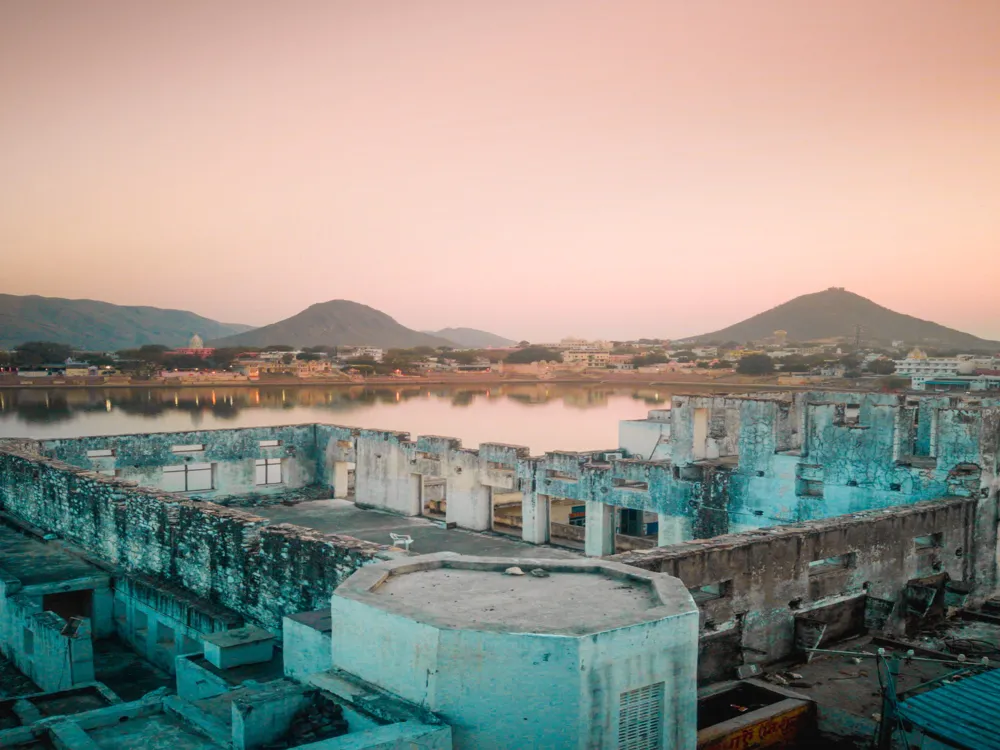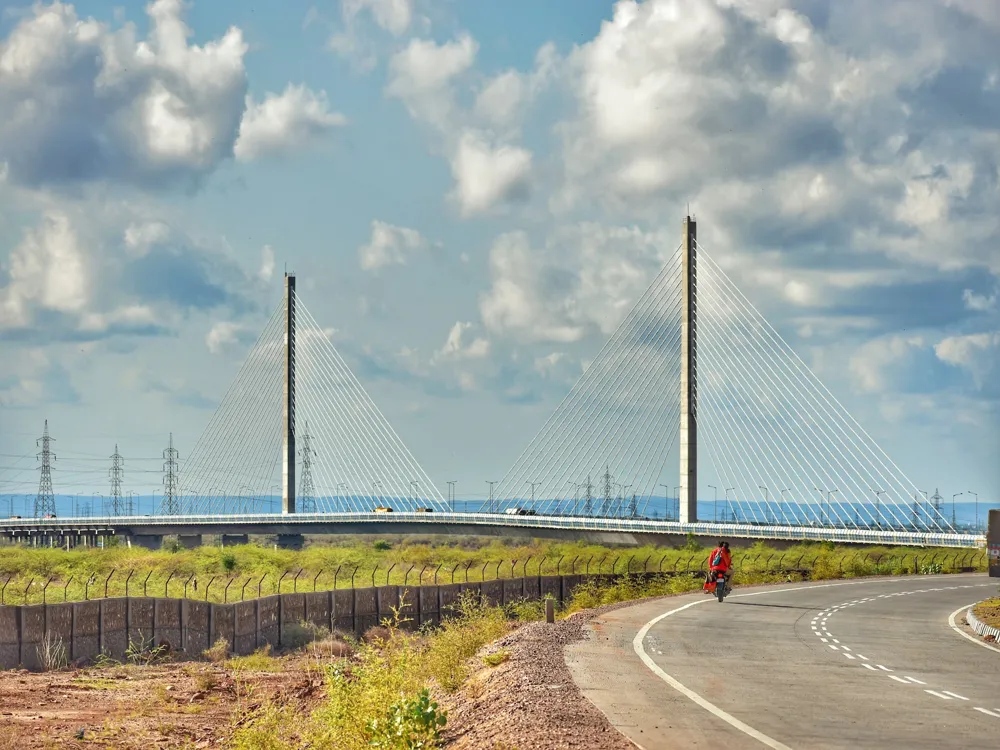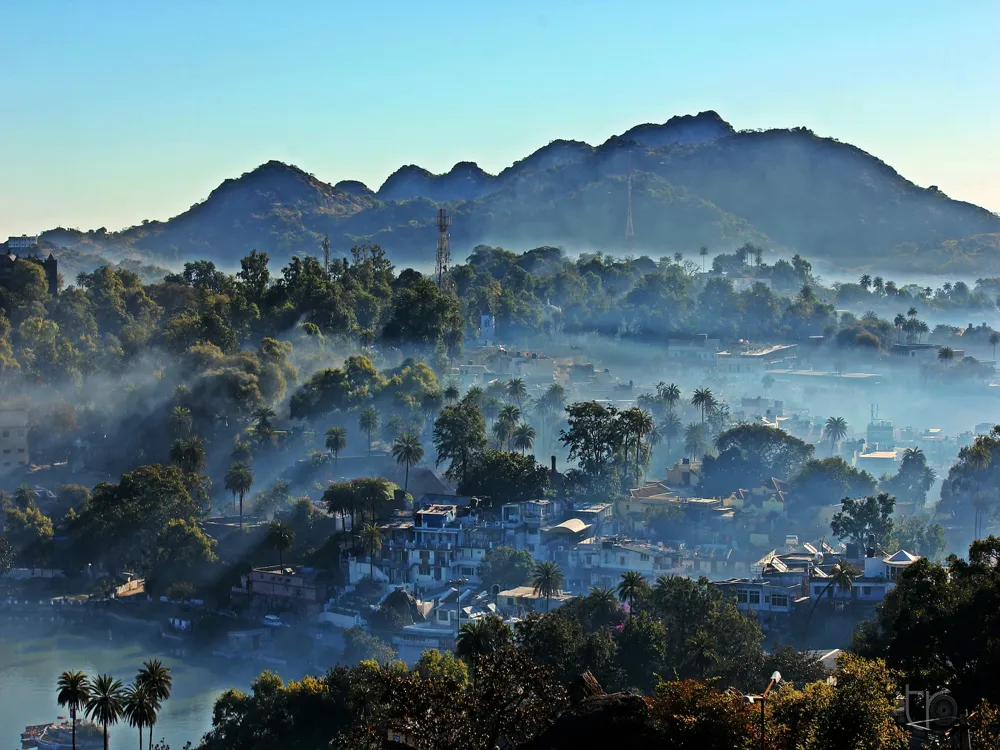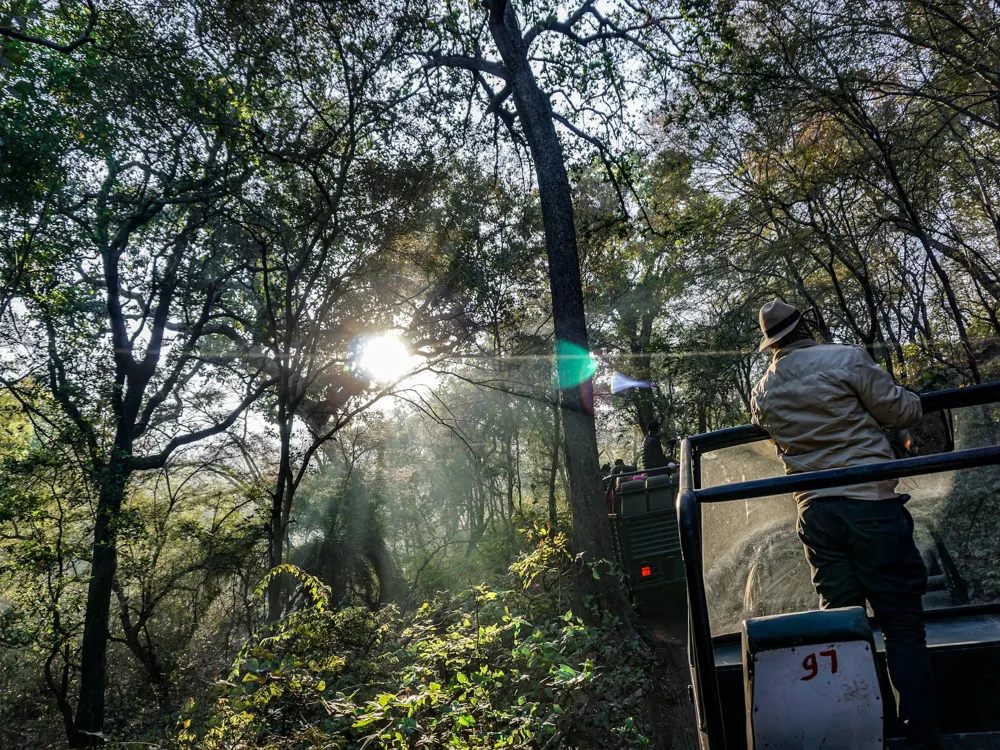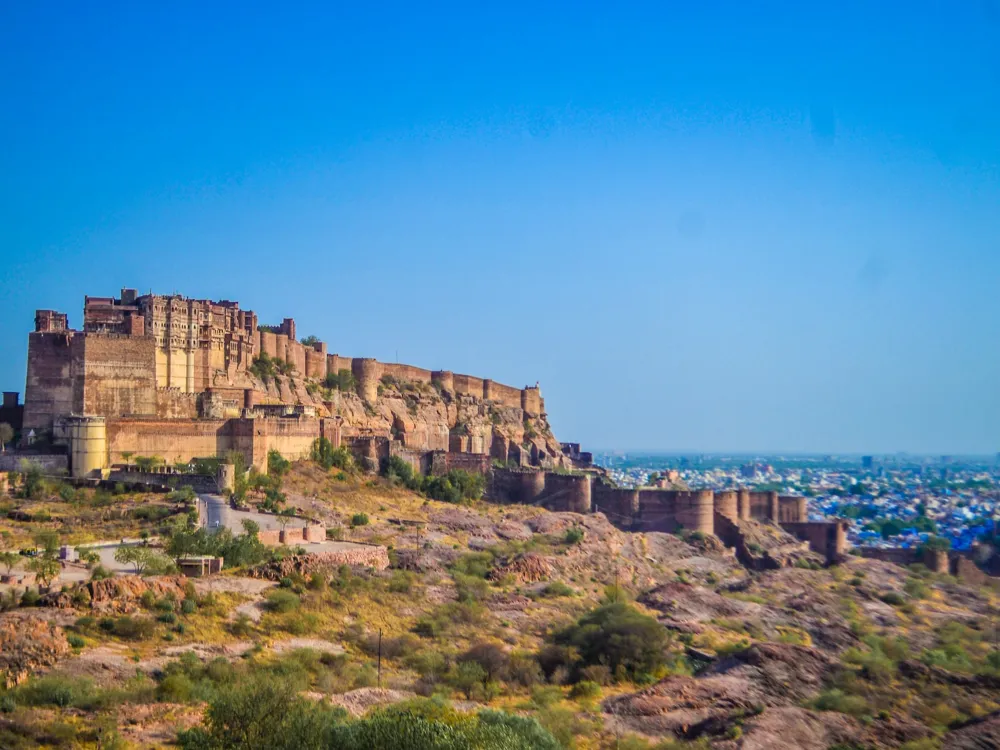Sambhar Lake, the largest inland saltwater lake in India, is a spectacular natural wonder located in the Ajmer district of Rajasthan. This vast saline wetland, covering approximately 190 square kilometers, is an important ecological site and a vital part of Rajasthan's rich cultural tapestry. The lake's origins trace back to the Treta Yuga, as per Hindu mythology, and it has been a significant source of salt production for over a thousand years, contributing to the ancient trade and economy of the region. The lake's unique geographical location, lying at the intersection of the Aravalli ranges and the Great Indian Desert, creates a remarkable ecosystem. This ecosystem supports a wide range of flora and fauna, including numerous migratory birds such as flamingos, which visit during the winter months, creating a vibrant avian spectacle. The lake's beauty is enhanced by the changing colors of its waters, which range from shades of pink to stark white, depending on the concentration of salt. Historically, Sambhar Lake has been an integral part of Rajasthan's heritage. The salt produced here was highly valued in ancient times and was even used as a medium of exchange. The lake has been mentioned in several historical texts, highlighting its significance in the socio-economic fabric of ancient India. The region around the lake is dotted with historical landmarks, including temples and shrines, adding to its cultural importance. Today, Sambhar Lake is not only a hub for salt production but also a popular tourist destination. Visitors are mesmerized by its vast, serene expanse and the unique cultural experiences it offers. The lake's surroundings, characterized by rustic villages and ancient ruins, provide a glimpse into Rajasthan's rich history and traditional lifestyle. The architectural marvel of Sambhar Lake is a blend of natural formation and human ingenuity. The lake is strategically designed to optimize salt extraction, a practice that dates back to the 7th century. The architecture of the lake involves a sophisticated system of salt pans, dikes, and channels, which are used to regulate the flow of water and facilitate the process of salt crystallization. The most notable architectural feature of Sambhar Lake is the network of narrow gauge rail lines that run across the salt pans. These lines are used for transporting salt from the pans to the processing units. This unique railway system is one of the few of its kind in the world and is a testament to the innovative spirit of the region's inhabitants. Apart from the salt extraction infrastructure, the lake is surrounded by historical structures that exhibit a blend of various architectural styles. Prominent among these are the ancient temples and shrines, some of which date back to the 10th century. These structures are built in the traditional Rajasthani architectural style, characterized by intricate carvings, ornate jharokhas (overhanging enclosed balconies), and grand entrances. The Shakambari Devi Temple, located on the western bank of the lake, is a prime example of this architectural style. The temple, dedicated to the goddess Shakambari, is an important pilgrimage site and is known for its exquisite carvings and historical significance. The ideal time to visit Sambhar Lake is between October and March. During these months, the weather is pleasant, and the lake attracts a large number of migratory birds, offering a spectacular sight for birdwatchers and nature enthusiasts. Sambhar Lake is well-connected by road and rail. Visitors can opt for local buses, taxis, or private vehicles to reach the lake. The nearest railway station is Sambhar Lake Railway Station, which is well connected to major cities in Rajasthan. There are several accommodation options near Sambhar Lake, ranging from budget-friendly guesthouses to luxury resorts. Visitors can choose based on their preferences and budget. Rajasthan's rich culinary heritage is reflected in the local cuisine. Visitors can savor traditional Rajasthani dishes like Dal Baati Churma and Gatte ki Sabzi at local eateries around the lake. Sambhar Lake offers breathtaking landscapes for photography enthusiasts. Visitors are advised to carry their cameras to capture the stunning sunrise and sunset views over the lake. Sambhar Lake is easily accessible from major cities in Rajasthan. The nearest airport is Jaipur International Airport, which is about 80 kilometers away. From Jaipur, visitors can hire taxis or take buses to reach Sambhar Lake. The lake is also well-connected by train, with the Sambhar Lake Railway Station serving as the nearest railhead. For those preferring to drive, the lake is connected by well-maintained roads, making it a comfortable road trip from nearby cities. Read More:Overview of Sambhar Lake, Ajmer, Rajasthan
Architecture of Sambhar Lake
Tips When Visiting Sambhar Lake
Best Time to Visit
Transportation and Accessibility
Accommodation Options
Local Cuisine and Dining
Photography and Sightseeing
How To Reach Sambhar Lake
Sambhar Lake
Ajmer
Rajasthan
₹ 9,000 onwards
View ajmer Packages
Weather :
Tags : Lake
Timings : 24 hrs
Time Required : 1 hour
Entry Fee : No Entry Fee
Planning a Trip? Ask Your Question
Ajmer Travel Packages
View All Packages For Ajmer
Top Hotel Collections for Ajmer

Private Pool

Luxury Hotels

5-Star Hotels

Pet Friendly
Top Hotels Near Ajmer
Other Top Ranking Places In Ajmer
View All Places To Visit In ajmer
Faq on Ajmer
What is Sambhar Lake in Ajmer famous for?
Sambhar Lake in Ajmer is famous for being the largest saltwater lake in India and for its stunning natural beauty.
What activities can visitors enjoy at Sambhar Lake?
Visitors can enjoy bird watching, photography, and salt harvesting activities at Sambhar Lake. Additionally, they can indulge in camping and picnicking by the lake.
Is it safe to swim in Sambhar Lake?
Swimming in Sambhar Lake is not recommended due to its high salt content and fluctuating water levels, which can pose safety risks.
What is the best time to visit Sambhar Lake?
The best time to visit Sambhar Lake is during the winter months, from November to February, when the weather is pleasant and ideal for outdoor activities.
Are there any accommodations near Sambhar Lake?
Yes, there are several accommodations available near Sambhar Lake, including resorts, guesthouses, and budget hotels.
View ajmer Packages
Weather :
Tags : Lake
Timings : 24 hrs
Time Required : 1 hour
Entry Fee : No Entry Fee
Planning a Trip? Ask Your Question
Ajmer Travel Packages
View All Packages For Ajmer
Top Hotel Collections for Ajmer

Private Pool

Luxury Hotels

5-Star Hotels

Pet Friendly
Top Hotels Near Ajmer
Other Top Ranking Places In Ajmer
Faq on Ajmer
What is Sambhar Lake in Ajmer famous for?
Sambhar Lake in Ajmer is famous for being the largest saltwater lake in India and for its stunning natural beauty.
What activities can visitors enjoy at Sambhar Lake?
Visitors can enjoy bird watching, photography, and salt harvesting activities at Sambhar Lake. Additionally, they can indulge in camping and picnicking by the lake.
Is it safe to swim in Sambhar Lake?
Swimming in Sambhar Lake is not recommended due to its high salt content and fluctuating water levels, which can pose safety risks.
What is the best time to visit Sambhar Lake?
The best time to visit Sambhar Lake is during the winter months, from November to February, when the weather is pleasant and ideal for outdoor activities.
Are there any accommodations near Sambhar Lake?
Yes, there are several accommodations available near Sambhar Lake, including resorts, guesthouses, and budget hotels.







